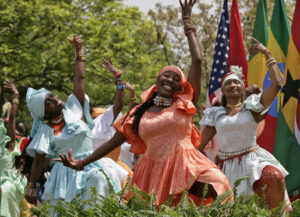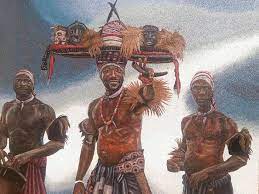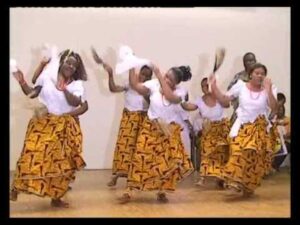Back to: Physical Health Education SS1
Welcome to today’s class!!
We are thrilled to have you in our class!!
In today’s Physical and Health Education class, we will be learning about Nigerian Traditional Dances
Nigerian Traditional Dances
Dance is an integral part of every culture. Nigeria is the motherland of many tribes; hence they have a lot of dance types as part of their culture.

Traditional and cultural dance had been a mainstay in the history of Nigeria. Traditional dances in Nigeria serve different purposes as Nigeria is made up of over 350 ethnic groups and tribes spread across the nooks and crannies of the country with diverse religions, cultures, and traditions. Dance is a form of emotional expression, social interaction, or exercise, in a spiritual or performance setting, and these dances are sometimes used to express ideas or tell a story.
Here are some traditional dances in Nigeria.
- The Bata Dance

The Bata dance is one of the cultural/traditional dances of the Yoruba people who are dominant in the southwestern part of Nigeria. This dance is associated with Sango, the Yoruba god of thunder who was said to be athletic during his days.
However, the bata dance remains incomplete without beats from the bata drum- a set of three drums namely Iya-Ilu, Itotele, and Okokonlo.
- Ikpirikpi-ogu (War dance)

This dance is commonly associated with the people of Abam in Arochukwu LGA, Abia State, Nigeria, Ikpirikpi-ogu is a dance of warriors originally performed to welcome soldiers back from tribal wars. It exudes an air of valor and it is strictly performed by men. Today it’s purely symbolic to show the strength of a community and its conquest over collective challenges. It is performed at key festivals and community events.
- Omuru-onwa and Agbacha-ekuru-nwa Dance

This dance strictly performed by married women, generally involves responsive movement of the body, in a rhythmic fashion to hip-swinging music. Married women and new mothers used such entertaining opportunities to exercise, lose weight, shed baby fats, and stay healthy through weekly rehearsals.
- Swange Dance

The Swange dance is a recreational and entertaining dance performed together by Tiv men and women of Benue State, Nigeria. This dance is performed in important gatherings or during festivals. The movement of the Swange dance can be slow, fast, or rhythmic all rendering the dancers shaking vigorously; this thus makes the Tiv people call the Swange dance “boneless dance”.
Swange dance is accompanied by beats with beautiful rhythm and a traditional horn called ‘Al-Gaita‘ which is blown throughout the dance session
- Koroso Dance

The Koroso dance originated among the Fulani and Kano people of Kano State, Nigeria. The Kosoro dance, a name derived from the rattle fastened to the legs of Koroso dancers, is a mixture of movements from the traditional dances of the Fulanis and Hausa people of Kano.
In summary, Dance is a form of emotional expression, social interaction, or exercise, in a spiritual or performance setting, and these dances are sometimes used to express ideas or tell a story.
Evaluation
Explain the importance of Dance to a culture
Reading Assignment
Cultural dance had been a mainstay in the ………… of Nigeria.
Weekend Assignment
List and explain three types of Dance in your locality.
We hope you enjoyed today’s class. In our next class, we will be talking about the Nigerian Traditional Dances II.
Let us know your thoughts and questions in the comment section, and we will attend to them as fast as we can.
